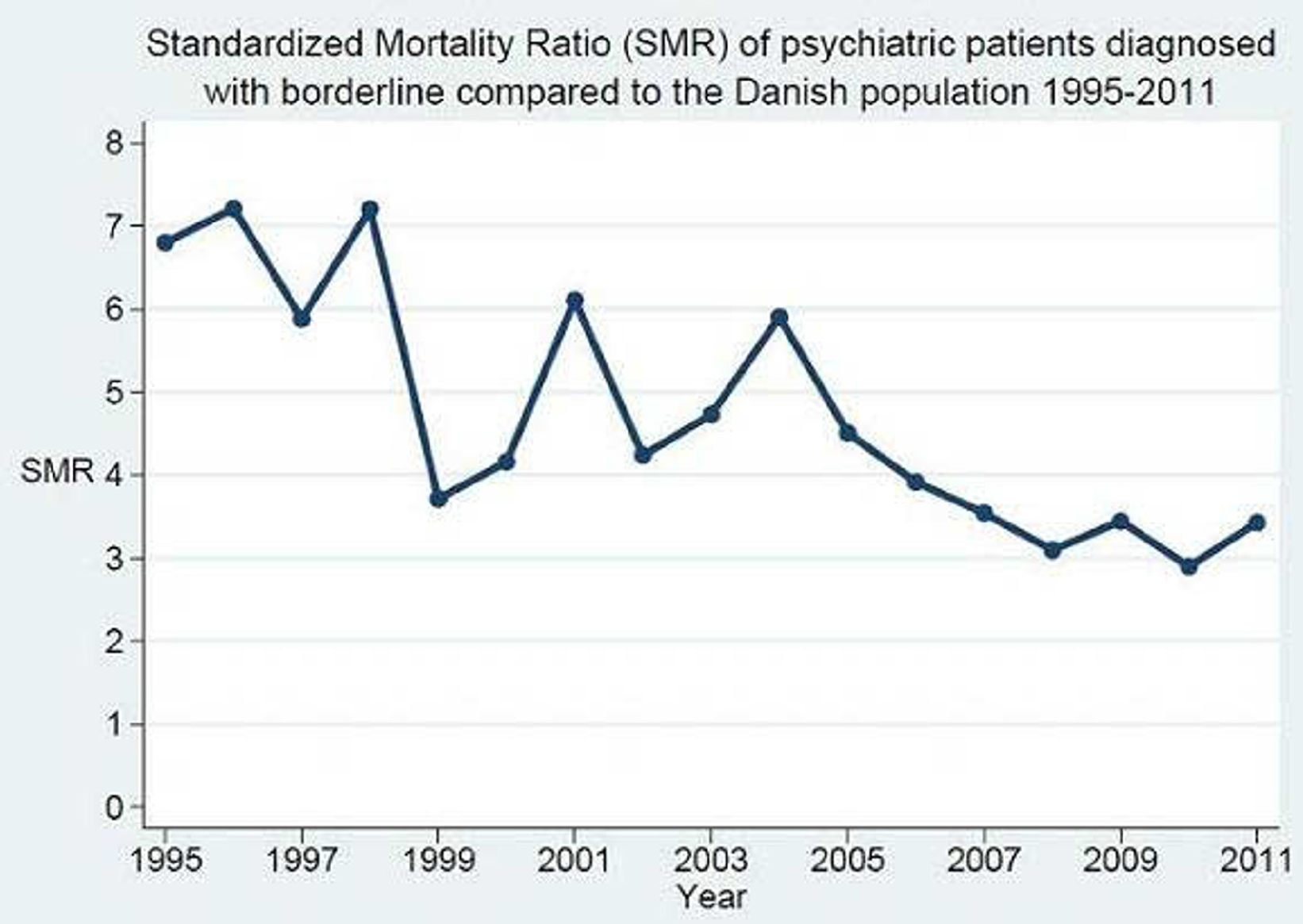Published online by Cambridge University Press: 15 April 2020
Borderline personality disorder is a common mental disorder The patients with borderline personality disorder have been found to have an extensive use of treatment, high rates of emergency contacts and high rates of suicide.
The Danish Psychiatric Central Research Register and The Danish Register for Causes of Death are nationwide and make it possible to follow psychiatric patients over long periods. Thus the registers can be used to look into mortality and causes of death in one specific patient group.
To determine the standardized mortality ratio and causes of death in patients with borderline personality disorder.
First-ever diagnoses of borderline personality disorder (ICD-10: F60.31) between 1995 and 2011 were identified in the nationwide registers together with time and causes of death. Age- and gender standardized mortality ratio were calculated comparing to the general Danish population. Causes of death were categorized as natural death, accident, suicide, violence or not specified.
A total of 11,450 patients with a borderline personality disorder diagnosis were identified in the period, of which 87.1 % female. The standardized mortality ratio of the whole period is 4.8 (95%-CI: 4.1-5.4). In the recent 5 years it is stabilized around 3.5 (95%-CI: 2.7-4.2).
The preliminary results of a roughly four times higher mortality in the patients with borderline personality disorder confirm the disorder to be of great severity and high costs to society.

Comments
No Comments have been published for this article.